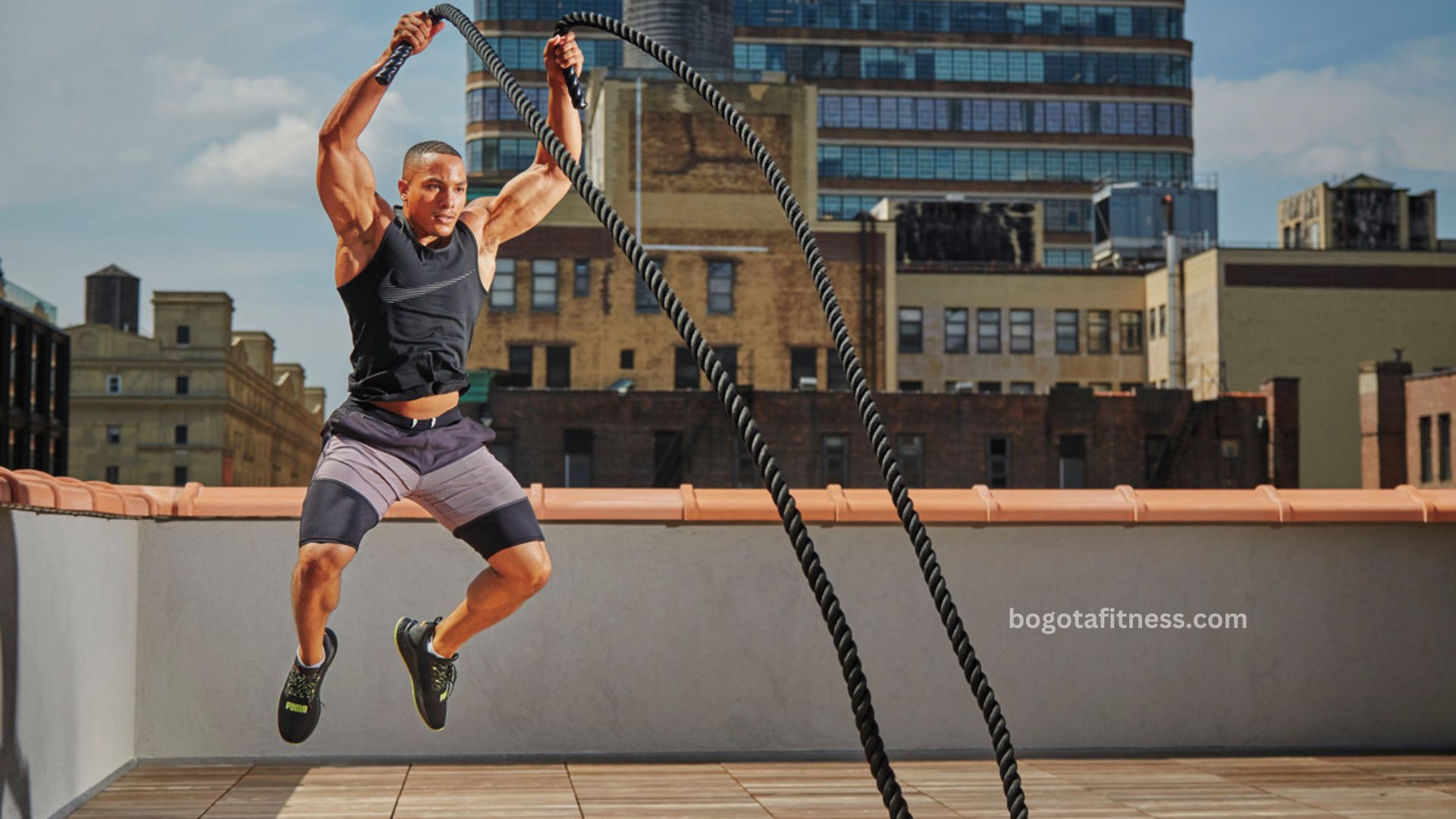It can be difficult to find an exercise regimen that you can fit into your hectic schedule. When it comes to choosing the ideal workout, most of us tend to opt for either strength training or cardio, rarely considering doing both.
You might choose to start an exercise regimen for the purpose of improving your general health, losing weight, or both. While several strength and cardio training regimens can be used independently, combining them yields the most benefits and balance.
WHAT IS THE DIFFERENCE BETWEEN CARDIO AND STRENGTH TRAINING?
Similar to salt and pepper, cardio and strength training is a traditional training combo. The two workouts complement each other well and should be done differently if you want to keep a healthy weight and gain muscle.
CARDIO TRAINING
Physical activities that raise your heart rate and cause your lungs to work harder than usual are known as aerobics and cardio exercise. Exercises that are aerobic in nature employ oxygen in the body to produce energy. Your heart, blood vessels, cardiovascular system, lungs, blood vessels, and respiratory system are all put to the test by this workout.
Cardio exercises should not be restricted to the gym; rather, you should be free to perform them wherever you feel most comfortable. You can reach your fitness goal by just doing simple exercises like walking, dancing, or jogging, which will raise your heart rate and metabolism.
STRENGTH TRAINING
Resistance training or weight lifting are other common names for strength training. Resistance training is a component of the workout that helps you grow muscle. The purpose of weight lifting is to increase muscle strength through focused exercise and external resistance. Among the methods of external resistance are:
- Dumbbells
- Body bars
- Kettlebells
- Resistance band
- Stability ball
Strength training is useful to people of all ages and is not just for bodybuilders, despite common opinion. For instance, frequent strength training, particularly for older individuals, helps prevent sarcopenia, or the loss of lean muscle mass. Furthermore, those who suffer from long-term medical issues including diabetes, rheumatoid arthritis, or obesity can benefit from weight training.
The physical activity guidelines for Americans were released by the US Department of Health and Human Services (HHS).1. It suggests that kids and teenagers six to seventeen years old include strength training in their physical activities.
IMPORTANCE OF BALANCE DURING STRENGTH TRAINING AND CARDIO TRAINING
Your training objectives specify how much weight and cardio should be trained simultaneously. A person training to complete their first 10k race will follow a different training regimen than someone seeking to bulk up.

Depending on your fitness objective, the two routines should be balanced as shown below.
Also Read: SMASH FITNESS PLATEAUS: TOP STRATEGIES TO BEAT WORKOUT PLATEAUS
WEIGHT LOSS
Your body needs to be well hydrated in order to use your stored glycogen or carbs for fat burning. For a quick metabolism of fat, begin with 20 to 30 minutes of resistance training. Get ready to burn fat faster by adding a cardio workout after resistance training.
Maintain a heart rate that burns fat. Use the Karvonen algorithm to find your fat-burning zone: maximum heart rate minus age equals desired heart range. Another choice is to exercise to the point of mild discomfort while maintaining a controlled heart rate.
For instance, interval training is the recommended approach to weight loss. It consists of one longer, more strenuous cardio session and two to three weight training sessions. The secret to seeing results in your weight reduction quest is striking a balance between building and maintaining muscle (consuming enough calories to nourish muscles and engaging in enough aerobic exercises to burn fat).
MUSCLE BUILDING
Strength training is more important for muscle building than aerobic exercise. This is due to the fact that exercise often burns both fat and muscle. This should not, however, be an excuse to completely give up training; you can still grow muscle by cutting back on the frequency and intensity of your cardio exercises.
You should combine an emphasis on muscle gain with proper diet, three to five weightlifting sessions each week, and two to three days of cardio exercise. Maintain a healthy diet before and after strenuous exercise to stop major muscle loss and to restore damaged tissues.
OVERALL HEALTH
Use the fat-reduction strategy of resistance training followed by cardio for best health outcomes. Gaining lean muscle mass, decreasing body fat, and having excellent cardiovascular health are the components of an overall healthy physique. Balance your strength and cardio training by combining anaerobic exercises like lifting weights with aerobic exercises like running or walking.
Strengthening your muscles first and then working out with a cardio machine will help you lose weight, acquire lean muscle, and improve your cardiovascular health. If you want to lower your blood cholesterol levels, begin with aerobic exercise and end with weightlifting.
Although strength training and aerobic exercises are beneficial on their own, combining the two improves your health. Exercise improves your body’s functionality and helps prevent diseases and other disorders related to lifestyle choices.
STRENGTH TRAINING VS. CARDIO TRAINING – WHICH IS BETTER FOR WEIGHT LOSS?
The greatest workout to lose weight is still up for dispute. Cardio lovers are in favor of doing cardio to lose weight because it raises heart rate, which burns fat by torching calories.
However, weight trainers feel that building muscle is the best way to lose extra fat. Your body burns more calories when lifting weights for a longer length of time throughout the day.

Since both arguments hold true, there is no superior workout than the other. Consistency is key when it comes to choosing the right activity for weight loss. Selecting only one training exercise can get boring. Changing up your regimen from time to time will help you stick to it more closely and eventually lose weight. To keep muscles from becoming accustomed to the same activities, mix up your cardio regimen and incorporate other strength and conditioning equipment.
For instance, finish your routine with weightlifting or kickboxing following your aerobic workout on a NON MOTORIZED TREADMILL or exercise bike with a fan wheel. By focusing on diverse muscles throughout your body, you can avoid straining and overstressing the same muscles, which can lead to muscular problems.
WHAT ARE THE PRIMARY REASONS FOR CARDIO TRAINING?
In addition to the well-known benefits of cardio exercise, such as enhanced cardiovascular health, weight loss, and blood pressure reduction, cardio training is particularly helpful for those who suffer from persistent sleep difficulties, such insomnia.
In America, between 50 and 70 million persons suffer from severe sleep disturbances.2. According to a study, patients with insomnia could benefit from regular aerobic exercise in addition to education about good sleep hygiene.3.
Aerobic exercise not only helps you sleep better but also enhances the quality of your brain, particularly as you age. As you age, brain atrophy and other related disorders are more likely to occur since your brain begins to gradually lose tissue around the age of thirty.4 Cardio exercises have been shown by scientists to help slow down the aging process and enhance cognitive function.
WHAT IS THE PRIMARY REASON FOR STRENGTH TRAINING?
Strength training comes in a variety of forms, such as, but not restricted to:
- Muscular hypertrophy: using equipment for moderate-to-heavy weight exercise to promote muscular growth
- Muscle endurance: enhancing your muscles’ resistance to strenuous activity
All things considered, strength training increases your strength and lowers your chance of falling. In a recent study, for instance, persons over 60 who participated in a comprehensive program that included resistance and strength training demonstrated a 34% decrease in falls.
HOW OFTEN SHOULD YOU ENGAGE IN CARDIO VS. STRENGTH TRAINING?
How frequently you need to perform strength or aerobic training will determine your fitness goals. For example, different training methods are needed for weight loss, muscle growth, endurance, and stamina.

For cardiovascular training and weight loss, the American Heart Association (AHA) suggests combining anaerobic and aerobic exercise to burn fat and maintain correct muscle balance.7. Get 75 minutes of intense aerobic training and at least 150 minutes of moderate aerobic activity per week. Typically, five days should consist of 15 minutes of vigorous activity and 30 minutes of moderate exercise.
The mild exercises consist of:
- Gardening
- Brisk walking
- Dancing
- Playing tennis and other light games
Intense pursuits consist of:
- Swimming
- Rope jumping
- Hiking uphill
- Vigorous yard work like digging
- Running
WHAT DOES MY BODY TYPE HAVE TO DO WITH HOW OFTEN I ENGAGE IN CARDIO VS. STRENGTH WORKOUT?
Knowing your body type will play a big role in determining how long you work out. Every person has a unique genetic predisposition based on their physiological makeup, which defines their body type. Accurately determining your body type will help you set aside the time required for more substantial outcomes.
Three primary bodily kinds exist:
- Ectomorphs: possess slender bodies with minimal muscle and fat.
- Mesomorphs: often have a high ratio of muscle to fat
- Mesomorphs: possess a high fat content and a low muscular mass
Ectomorphs should preferably perform thirty-minute aerobic workouts twice a week and three times a week of muscle resistance training. Mesomorphs, on the other hand, should do 30 to 45 minutes of cardio three to five times a week in addition to 30 minutes of weight training two to three times a week.
Lastly, it is advised that endomorphs combine four days of weight training with two to three days of high intensity interval training (HIIT workout).
GET YOUR CARDIO AND STRENGTH TRAINING DOWN WITH TRU GRIT
Cardio and weight training exercises are recommended for all ages, regardless of experience level in the fitness realm. For both workouts, TRU GRIT offers training equipment that guarantees optimal muscle utilization, enhancing your general health.




